CYRIL VIVIAN EAGLESON GORDON
Cyril Vivian Eagleson Gordon, son of Ronald Eagleson Gordon, was born in Lahore, Pakistan, on 1 May 1922. He was educated at Wellington College and later Cambridge University. On 28 December 1934, Cyril went to Bombay, India, with the Peninsular and Oriental Steam Navigation Company and boarded the Kaisar-I-Hind in London. Five years later, on May 5, 1939, Cyril returned to England with the Bibby Line S.S. Oxfordshire, which he boarded in Rangoon, Burma. In 1941 Gordon was granted an emergency commission in the Royal Corps of Engineers and was posted to King George V's Own Bengal Sappers and Miners Group, Indian Engineers, in India and was commissioned a 2nd Lieutenant on 12 October 1941. Cyril went with the 77th Indian Army to Burma. He served the first three months of 1943 as a lieutenant in the Arakan, commanding a section of the 74th Indian Field Company, King George V's Own Bengal Sappers and Miners Group, in support of the 55th Indian Infantry Brigade, 14th Indian Division.
In February, he led six men and a small covering party of infantry on a raid on the Japanese lines of communication six miles behind the front line. They destroyed two bridges and laid anti-tank mines. The following month, when the enemy had established themselves on a wooded knoll known as "the Pimple", his camp 400 yards away at Kyauktan came under heavy fire. He defended the position for seven hours, supporting the infantry's counter-attack with fire.
In the withdrawal from the Htizwe-Kyauktan defensive box, Cyril was in charge of the ferry. After getting all the troops across the river, he returned to recover any equipment that could be salvaged. Then he got all his boats away to Taungmaw, where he used them to evacuate the wounded. He was awarded the Military Cross for these actions.
In March 1944, during the Second Chindit Campaign, 77th Indian Infantry Brigade elements established a fortified base near Mawlu, later known as "White City", from the myriad parachutes hanging from the trees. They blocked the road and railway at Henu, severely weakening the enemy's communication lines. On April 6, the Japanese retaliated with an air raid on the White City stronghold, followed by a bombardment with field guns and mortars. Cyril, then a captain serving with 89 Field Company RE, was attached to the 3rd Battalion 6th Gurkha Rifles and led their commando platoon. He was ordered to move his men from the woods in small groups and ambush any Japanese attempting to withdraw northwards from Henu. In the early hours of April 7, they were attacked in strength by the Japanese. Cyril was shot in the shoulder and lost the use of his right arm, but he continued to direct and encourage his men, and after intense fighting, the assault was beaten off, and the enemy withdrew. For this, he was awarded a Bar to his MC.
After being wounded in Burma, he was evacuated to India, and when the war ended, he moved to Malaya, where he served as a district officer. He was then granted a regular commission and attended Staff College. In 1951 he married Clara Duse and received two sons and a daughter. Subsequently, he served as an exchange officer in the Munich Engineer school and Italy in 1976 because of earthquake disasters and ended his career in Cyprus, Aden and BAOR. He retired from the Army in 1977. An accomplished linguist (he was fluent in French, Italian, German, Malay and Urdu), Gordon's interest in different nationalities and cultures was carried into civilian life.
He travelled widely, propelling his folding canoe down the rivers of England and Germany and the Adriatic coast; his family recalled caravan holidays in the Alps, on the Mediterranean and skiing in the Dolomites. Settled in a Wiltshire village, he was an enthusiastic rambler, gardener and local historian, an active supporter of the University of the Third Age and the English Speaking Union. He had a quality of stillness which puzzled his grandchildren. Asked to account for it, he explained that it came from years of handling dynamite. In 2002 he became a member of the Burma star memorial. Cyril Gordon died on January 9, 2007
GORDON FAMILY TREE
Peter of Ballee William of Ballyskeagh 1697 - ?
x x
Mary Boak Mary Ross
Aaron Gordon William Gordon (1738 - 1831) Margaret Gordon Mary Gordon
x
Margaret Boak (1744 - 14/11/1837)
Elizabeth(... - 1839) Aaron(1781 - 8/10/1844) Robert of Stragollen (1774- 7/9/1850) William(..- ./1/1837) Mary
X 19/04/1809
Ellen Eagleson (1786 - 21/09/1860)
George (22/6/1824 - 4/6/1896) William(15/5/1812 - 25/2/1814) Aaron (17/5/1814 - 1860) Matilda An (1/11/1817 - 1863) William E. (4/6/1831-15/1/1873) Elizabeth Robert (4/6/1823 - 23/7/1823) Margaret (5/5/1810 - 1816) Ellen (1827 - 1899) Robert (1830 - 1883)
X (1)Marion Hay Forbes
Robert (1855-1918) X (2) Emelia M. Dick
x
Marion Elizabeth Versfeld
William Eagleson Archibald Alexander Robert Aaron Emily Mackenzie Helen Isabelle
George Ronald Eagleson x x x x Margaret Katherine Blair Lizzie Maude Smith Graham H. W. Nicholson
Vera Newcomb
Cyriel Vivian Eagleson Colin Mackenzie Blair William "Bill" Hyde Eagleson Archibald G. R. Edmund Robert Adam Cameron Gordon Graham (Nicholson)




